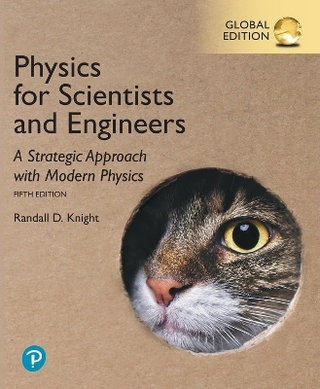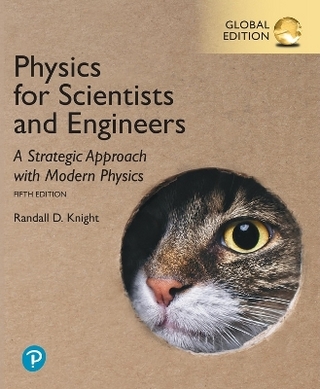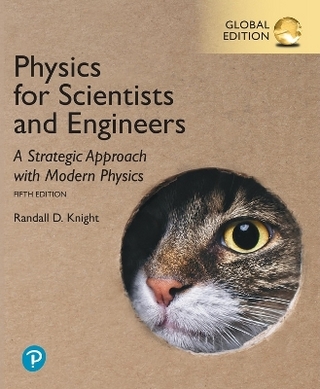
Discovering Superconductivity – An Investigative Approach
John Wiley & Sons Inc (Hersteller)
978-1-118-34318-0 (ISBN)
- Keine Verlagsinformationen verfügbar
- Artikel merken
Superconductivity is a quantum phenomenon that manifests itself in materials showing zero electrical resistance below a characteristic temperature resulting in the potential for an electric current to run continually through such a material without the need for a power source. Such materials are used extensively in medical and power applications, e.g. MRI and NMR machines. Discovering Superconductivity uses a series of practical and investigative activities, which can be used as tutor demonstrations or as student lab exercises. This highly illustrated text features the following sections: * Introduction - including a brief history of superconductivity * Superconductivity - an explanation of the phenomenon and its effects * Superconducting materials including High & Low temperature superconductors * Applications how superconductivity is used in medical imaging, at CERN and in the Maglev trains This text will serve as an excellent introduction for students, with or without a physics background, to superconductivity.
With a strong practical, experimental emphasis, it provides readers with an overview of the topic preparing them for more advanced texts used in advanced undergraduate and post-graduate courses. PowerPoint files of the figures presented within this text are available at: booksupport.wiley.com A word from the author: "The intention of this text is to introduce the reader to the study of superconductivity via a minds-on approach ...The minds-on approach takes this a stage further by requiring the learner to engage with the process to a greater extent."
Professor Gren Ireson is Professor of Science Education and his research interests include the learning and teaching of particle physics, quantum phenomena and superconductivity. He teaches an undergraduate certificate course, delivering particle physics, astrophysics and quantum phenomena. For the past seven years he has been involved in pan-European projects developing electronic resources, paper resources, training materials and novel investigations for the learning and teaching of superconductivity. This work, currently ongoing, is based on four EU funded projects. In addition to delivering this material to undergraduate certificate students the author has delivered the material to advanced school teachers, post graduate scientists [non-physicists] and to students and faculty within the School of Science and Technology at Nottingham Trent University.
List of Figures ix List of Tables xiii Preface xv Acknowledgements xvii To the Teacher xix To the Student xxi SECTION I Introduction 1 1 Resistivity and Conduction in Metals 3 1.1 Introduction 3 1.2 Resistivity 3 1.3 Conduction in Metals 5 1.4 Revisiting Ohm s Law 7 References 11 2 A Brief History of Superconductivity 13 2.1 Introduction 13 2.2 The Beginning: Kwik Nagenoeg Nul 13 2.3 1933 Perfect Diamagnetism? 16 2.4 The London Brothers 19 2.5 1957 The BCS Theory 19 2.6 1962 The Josephson Effect 21 2.7 1986 Bednorz and Mu¨ ller and Oxide Superconductors 22 2.8 2003 Abrikosov, Ginzburg and Leggett and the Future 22 2.9 Getting Cold Enough 24 References 26 SECTION II Superconductivity 29 3 An Explanation of Superconductivity? 31 3.1 Transition Temperature 32 3.2 Two-Fluid Model 34 3.3 Critical Field, Critical Current 36 3.4 Schawlow and Devlin 38 3.5 The London Equation 39 3.6 BCS Theory 41 3.6.1 The Isotope Effect 44 3.6.2 The Energy Gap 44 3.7 An Alternative Approach to the Energy Gap 45 3.7.1 Electron Electron Attraction 47 References 49 4 The Meissner Ochsenfeld Effect 51 References 59 5 Diamagnetic Effects 61 5.1 Diamagnetism, Paramagnetism and Ferromagnetism 61 References 67 6 Persistence of Current 69 6.1 Quinn and Ittner 71 References 77 7 Type I and Type II Superconductors 79 7.1 Critical Magnetic Field 79 References 88 8 Flux Pinning 89 8.1 Vortex and Flux Lines 90 8.2 The Original Abrikosov 91 References 95 SECTION III Superconducting materials 97 9 Low-Temperature Superconductors 99 10 Organic Superconductors 101 References 105 11 High-Temperature Superconductors 107 11.1Magnesium Diboride 111 11.2 Transition Temperature of High- Superconductors 112 References 114 SECTION IV Applications 115 12 Superconducting Wire 117 13 Medical Imaging 121 13.1Magnetic Resonance Imaging (MRI) 121 13.2Magnetoencephalography 122 13.2.1 Neuronal Currents 127 References 128 14 CERN and the LHC 129 References 133 15 Maglev Trains 135 Appendices 139 A The BCS Theory 141 B Flux Penetration 143 C The Josephson Junction and the SQUID 147 D MRI 151 Generating the MRI Signal 151 References 155 E A Note on Superfluidity 157 Index 163 F A Note on Safety 161 Index
| Erscheint lt. Verlag | 30.7.2012 |
|---|---|
| Verlagsort | New York |
| Sprache | englisch |
| Maße | 150 x 250 mm |
| Gewicht | 666 g |
| Themenwelt | Naturwissenschaften ► Physik / Astronomie |
| Technik ► Elektrotechnik / Energietechnik | |
| ISBN-10 | 1-118-34318-2 / 1118343182 |
| ISBN-13 | 978-1-118-34318-0 / 9781118343180 |
| Zustand | Neuware |
| Haben Sie eine Frage zum Produkt? |
aus dem Bereich


